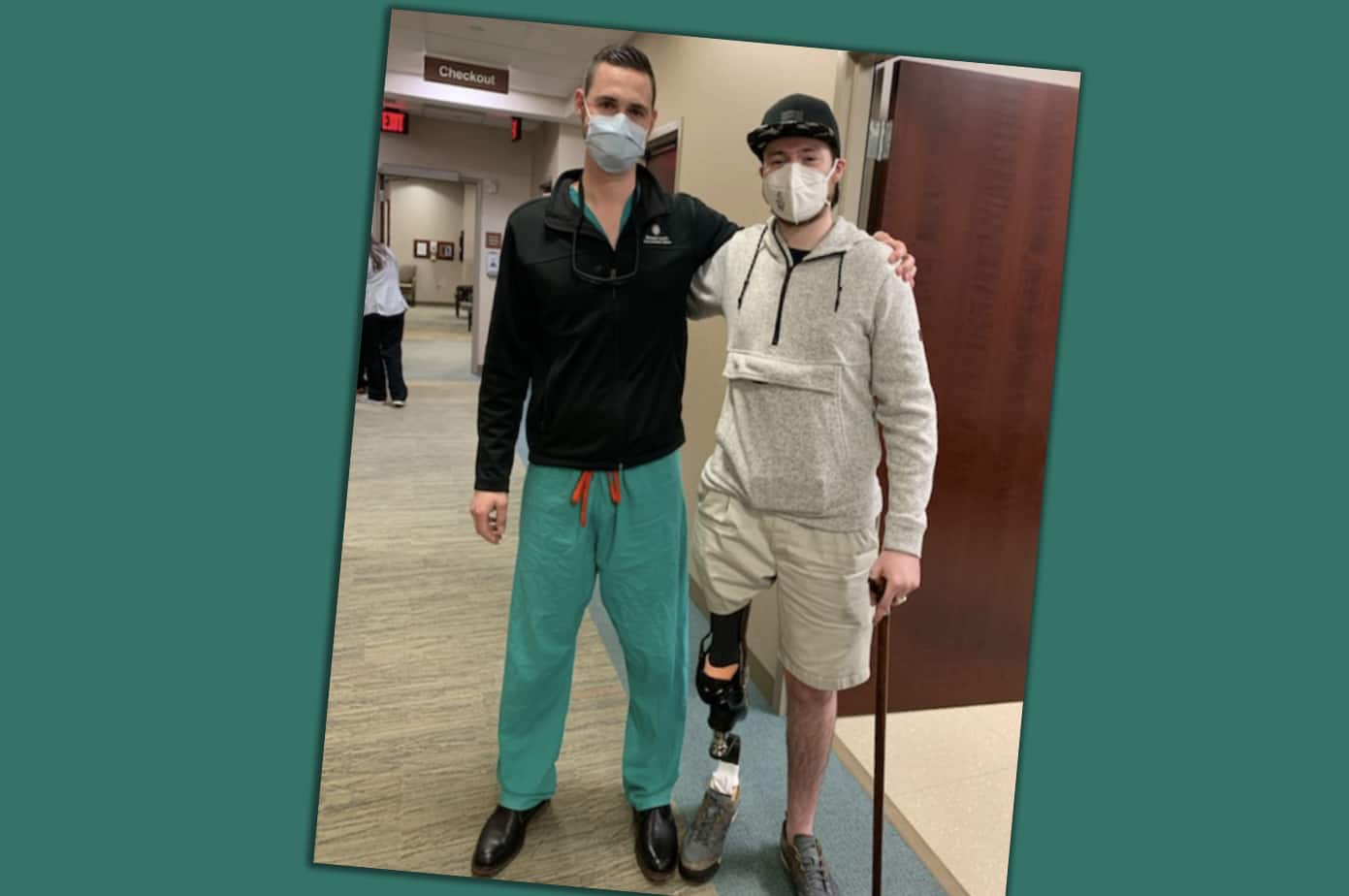
By: Atrium Health – Daily Dose
At first, Parker Cain thought he had a knee problem. In 2019, a swollen knee sent this 20-year-old to a doctor in Asheville, who believed an infection was the culprit. The doctor performed a knee wash to clear the infection and told Parker that he’d be fine from there.
But when the swelling increased, Parker switched his care to Atrium Health and found out it wasn’t what he thought. There, scans revealed that Parker had advanced osteosarcoma (bone cancer) in his knee that had spread to his lungs. He began treatment at Atrium Health Levine Cancer Institute (LCI).
“My immediate first thought was, ‘Alright, how do we solve this? What do we do? I’ve always been the person who just says, ‘Don’t stop no matter what life throws at you,” Parker says. He’s a car enthusiast, and even in the hospital, he wanted to stay in the driver’s seat.
LCI’s multidisciplinary sarcoma team quickly developed a treatment plan for Parker. The team, which has cared for sarcoma patients for 29 years, includes orthopedic oncologists, medical oncologists, surgical oncologists, pathologists, radiologists and more. Parker’s plan began with chemotherapy with Michael Livingston, MD, Parker’s medical oncologist. After that, Parker would have a surgery to remove the cancer from his knee and then return for completion of his chemotherapy.
“Dr. Livingston knew from the beginning exactly what needed to be done to give me my best fighting chance,” Parker says.
Between his rounds of chemotherapy, Parker became the first patient in Charlotte to undergo a relatively rare type of limb salvage surgery for his bone cancer – one that would allow him to return to his usual active lifestyle.During a rotationplasty, a surgeon removes the segment of the knee that contains the cancer while keeping the blood vessels and nerves intact. Then, the surgeon re-attaches the lower leg – turned 180 degrees around – to the thigh. This means the foot points backwards so the ankle can function as a knee joint. A prosthesis – an artificial leg – attaches to the new joint. Metal implants help secure the bones’ location, but after recovery, the bones do all the work – not the implants. This can make a rotationplasty a longer-lasting, more durable solution than other surgical options
Doctors try to avoid amputation and save limbs whenever possible. Colin Anderson, MD, an orthopedic surgeon at LCI, spent time talking with Parker to learn about his personality and his lifestyle to find the best surgery for him. Because Parker’s previous surgeries kept him from the typical surgery option, a knee replacement surgery, Dr. Anderson offered him a rare surgical option: a rotationplasty.
“Dr. Anderson said that a rotationplasty would give me the best quality of life, and that it’d get me back to doing the things I love the fastest, the smoothest and the easiest,” Parker says.
During a rotationplasty, a surgeon removes the segment of the knee that contains the cancer while keeping the blood vessels and nerves intact. Then, the surgeon re-attaches the lower leg – turned 180 degrees around – to the thigh. This means the foot points backwards so the ankle can function as a knee joint. A prosthesis – an artificial leg – attaches to the new joint. Metal implants help secure the bones’ location, but after recovery, the bones do all the work – not the implants. This can make a rotationplasty a longer-lasting, more durable solution than other surgical options
“Rotationplasty is not a common surgery by any means, but it really can be life-changing for the right patient,” Dr. Anderson says. “Parker likes mountain biking, he likes outdoor activities, and he wanted to get back to hiking. That’s something that a rotationplasty can offer him. It’s truly a biologic reconstruction. That reconstruction can really last forever and put up with whatever the human body can do. There are people who, after a rotationplasty, are sprinting with blades, skydiving, windsurfing and mountain biking.”
Watch a Video About Parker Cain–
Back to Latest news